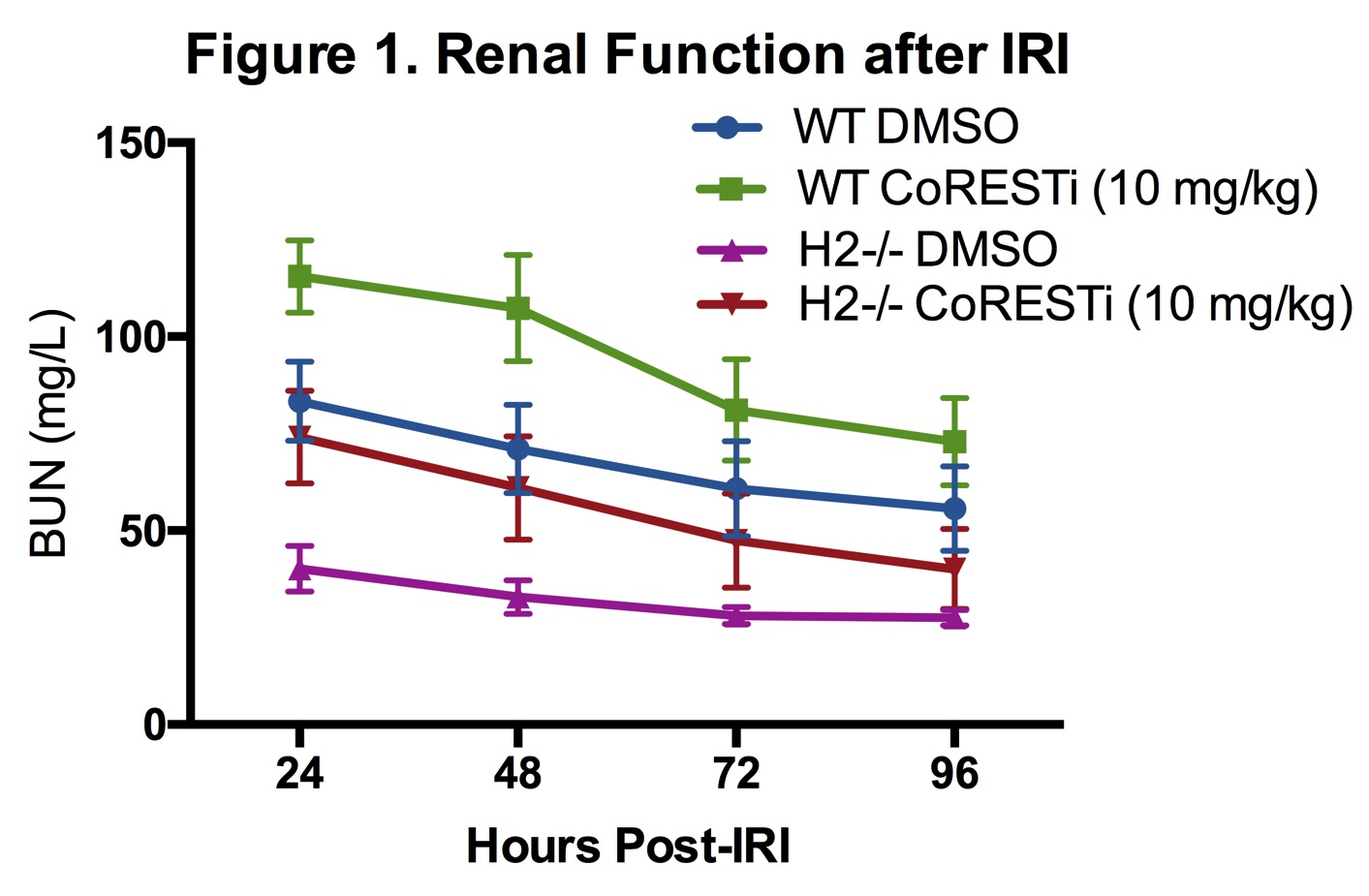D. D. Aufhauser Jr1, D. Murken1, Z. Wang1, G. Ge1, T. Bhatti3, W. Hancock2,3, M. Levine1,4 1University Of Pennsylvania,Surgery,Philadelphia, PA, USA 2University Of Pennsylvania,Pathology And Laboratory Medicine,Philadelphia, PA, USA 3Children’s Hospital Of Philadelphia,Pathology And Laboratory Medicine,Philadelphia, PA, USA 4Children’s Hospital Of Philadelphia,Surgery,Philadelphia, PA, USA
Introduction: Class I histone/protein deacetylases (HDACs) 1 and 2 bear >85% protein sequence homology and conventionally are thought to have similar function via occupancy in nuclear co-repressor complexes. Inhibition of the HDAC-axis has been shown to mitigate renal warm ischemia-reperfusion injury (IRI) in mice.
Methods: Wild type C57BL/6 (WT) and whole animal-inducible HDAC1- or 2- gene deleted mice (HDAC1-/- or HDAC2-/-) were used in this study. Standardized warm renal IRI consisted of unilateral clamping of the renal pedicle and contralateral nephrectomy. Primary renal tubular epithelial cell (RTEC) cultures were derived from each genetic strain for use in protein analysis.
Results: HDAC1-/- mice had impaired IRI tolerance compared to B6 controls with higher daily BUN levels following IRI whereas HDAC2-/- mice demonstrated profound protection from renal IRI. Protein analysis of nuclear extracts from WT, HDAC1KO, and HDAC2KO RTEC showed that deletion of either HDAC1 or 2 was associated with compensatory enhanced protein expression of the other. Pulldown experiments from RTEC extracts demonstrate that HDAC2KO leads to enhanced HDAC1 association with CoREST, NuRD and Sin3A nuclear co-repressor complexes and increased protein expression of these co-repressor components. In vivo inhibition of the CoREST complex in both WT and HDAC2-/- mice increased vulnerability to renal IRI injury and returned HDAC2-/- mice to a WT renal IRI phenotype (Figure 1).
Conclusion: HDAC1 and 2 have reciprocal effects on murine renal IRI tolerance, with HDAC1 deletion increasing vulnerability and HDAC2 deletion providing substantial protection from warm and cold ischemia. HDAC2 deletion leads to alteration in expression and possibly stability of nuclear co-repressor complexes, and its effect can be reversed with inhibition of the CoREST complex.
